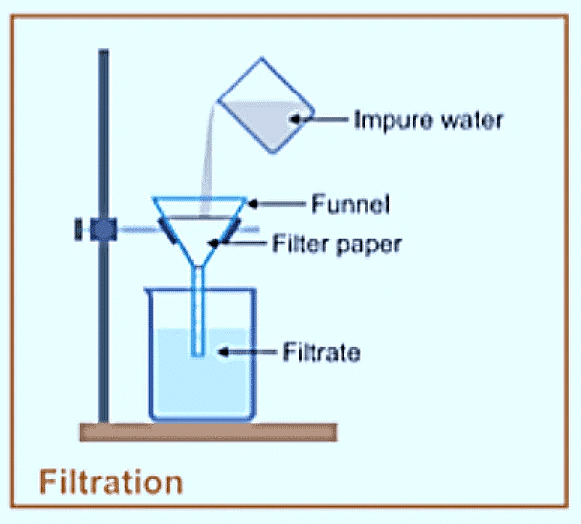Removing insoluble impurities
Key Notes:
1. What Are Insoluble Impurities?
– Impurities are things that shouldn’t be in a substance.
– Insoluble impurities are things that don’t dissolve in a liquid.
2. Why Remove Insoluble Impurities?
– Insoluble impurities can make things dirty or not safe.
– We want to get rid of them to make things clean and safe.
3. Filtration: A Simple Way to Remove Impurities
– Filtration is like using a strainer in the kitchen.
– It uses a filter paper or a mesh to catch the impurities.
– The clean liquid passes through, leaving the impurities behind.

4. Steps for Filtration
– Pour the mixture through the filter.
– The filter paper or mesh catches the impurities.
– The clean liquid goes into a container.
5. Examples of Filtration
– Making tea: Tea leaves are filtered out to get clear tea.
– Cleaning water: Impurities are removed to make water safe to drink.
6. Other Ways to Remove Insoluble Impurities
– Sedimentation: Letting impurities settle to the bottom.
– Decantation: Pouring the clean liquid into another container, leaving impurities behind.
7. Understanding Insoluble Impurities:
– Insoluble impurities are tiny bits or substances that don’t dissolve in a liquid.
8. Why Remove Impurities?
– We remove impurities to make things clean, safe, and useful.
9. Filtration:
– Filtration is like using a strainer.
– It helps us separate impurities from a liquid.
– Think of it as a sieve for separating solids from liquids.
10. Steps of Filtration:
– We use a filter, like a filter paper or a mesh.
– Pour the mixture through the filter.
– The impurities stay on the filter, and the clean liquid passes through.
11. Everyday Examples:
– Making tea: We use a tea strainer to remove tea leaves.
– Filtering water: In water treatment plants, they use filters to remove dirt and particles.
12. Other Methods:
– Sedimentation: Let impurities settle at the bottom and carefully pour out the clean liquid.
– Decantation: Slowly pour the clean liquid into another container, leaving impurities behind.

13. Importance:
– Removing insoluble impurities is important for our health and safety.
– It helps us have clean water, clear drinks, and safe food.
14. Conclusion
– Removing insoluble impurities is important to make things clean and safe.
– Filtration is one way to do it, just like using a strainer in the kitchen.
Let’s practice!

